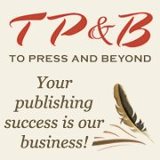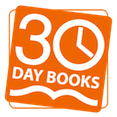Six Powerful Ways to Market a Children’s Book
Today’s guest post is a great one, and courtesy of Gail and Penny from To Press & Beyond – a full-service book shepherding company that specializes in children’s and juvenile titles. I invited them onto the blog to give us some actionable tips on how to market a children’s book. And boy did they deliver! I think you’ll love these 6 powerful ways to spread the word about your kid lit.

Oh how I love The Very Hungry Caterpillar. What’s your favorite children’s book? Picking one up can be such a comforting activity, don’t you think?
[line]
by Gail Kearns & Penelope Paine
So you’ve written a children’s book, hired an artist to create the book’s illustrations (or illustrated it yourself), and it is now at the printer’s (probably in China if it’s four-color). Now what? It’s time to put your marketing plan in motion. Children’s books have some unique opportunities when it comes to marketing and PR. The following shouldn’t be overlooked.
1. School visits and author days
Kids love authors and illustrators and they love to ask questions. Teachers like having authors visit in person or through Skype. Here’s a good article on how to get started with school visits: http://www.sellingbooks.com/the-abcs-of-author-school-visits/
There are several places on the Internet where you can list yourself. Some are paid and some are free. Here’s a free one: http://www.authorvisitmatch.com
There are ways in which books can be sold during an author visit.
- The author will provide a flyer/order form for the school to use for handling book sales. These are sent home to the parents.
- The school will handle sales through their own distributor or a bookstore in their community.
Click here to get a sample checklist of a successful school visit. http://www.karenbeil.com/authorvisits/index.php
What can authors do during a school visit? Make it interactive. Handout sheets are always great. They can be anything from “Did you know?” to coloring book pages of the characters in the story.
Don’t forget to have someone snap a picture or take a video of your visit. It’s bound to be a valuable addition to your website or blog.
Here’s another tip: Some Barnes & Noble bookstores will host school visits and include authors in their programs. Check with your local store and ask to speak with the Community Relations Manager.
2. Children’s book fairs
There are hundreds of book fairs across the U.S. Some are specifically kids oriented, like the Orange County children’s book festival, now in its eighth year: http://kidsbookfestival.com Others, like the Los Angeles Times Festival of Books, has a big focus on kids with a YA stage, children’s stage, http://events.latimes.com/festivalofbooks/
Here’s a link to book fairs state by state put out by the Library of Congress: http://www.read.gov/resources/statefairs.php
3. Book awards for children’s books
There are numerous awards for children’s books, including the Newbery, Caldecott, Sibert, Wilder, and Carnegie. The list goes on and on. But what if you decided to self-publish a children’s book? Here’s an award that we like for indie authors: http://www.moonbeamawards.com
Most book awards require an entry fee, ranging from $25 per title to $150. If you have the budget, it’s worth it to submit. Should your book be named a winner, you can get stickers for the cover, send out a press release, and add to your collection of testimonials!
4. Library sales
Pay a visit to your local library and speak with the children’s book specialist. You’d be surprised at what they know about your community and what opportunities there might be. Bring along a book and donate it to the library! Consider developing a mailing list of librarians and letting them know when your book wins an award or gets a stellar review. Consider a post card mailing to librarians with your book’s cover image and ordering details. A good list can be found here: http://www.newpages.com/mailing-lists/
5. Catalog sales
Most books can be sold somewhere other than a bookstore. This is especially true with children’s books. Catalogs have large circulations. Examples include ChinaBerry: http://www.chinaberry.com; Nature Watch: www.nature-watch.com and Childs Work Childs Play: www.childswork.com
Catalog sales require a bigger discount than wholesale or retail, but you can usually negotiate nonreturnable. That means all sales are final. Research catalogs that are a good fit for your book. Get samples. Are there items in the catalog that your book would pair well with? If so, be sure to include this in your letter to the catalog merchandise director along with a finished copy of your book.
To find more catalogs, check out the Directory of Mail Order Catalogs. A bit pricey but could be worth its weight in gold. http://www.greyhouse.com/marketing.htm. Or your local library may have a copy.
6. Special sales
Think about where your book might sell other than to catalogs, libraries, and in bookstores. If your book is a concept book, would it work for therapists and social workers to be placed in their waiting rooms? A tea party book might be a good sale for teashops. Does it have a nature theme? We helped a local author with her book on butterflies in the garden. Sales have been brisk in the local natural history museum. If you can’t think of somewhere, consult your children’s book editor, who’s trained to think ahead to publication.
The Museum Store Association offers a mailing list that is available for rental on a one-time-per-usage basis. The names may be selected from a variety of categories to help you target your message. Go here to find out more: http://www.museumstoreassociation.org/Public/Promote_You_Business/Vendors/Mailing_Lists.aspx
Maybe you have a seasonal book. “Scarecrow Finds a Friend” by Blume Rifkin had the perfect tie-in with Halloween, so she sets up a table each year in the local farmer’s pumpkin patch, wears a witches’ hat, and sells autographed books. What fun!
The possibilities are endless.
 About the authors: Gail Kearns and Penelope Paine of To Press & Beyond have over twenty years of book industry experience. Located in Santa Barbara and London, they are specialists in children’s and juvenile titles, and can assist with all aspects of book production from design and ghostwriting to editing and promotion. www.topressandbeyond.com.
About the authors: Gail Kearns and Penelope Paine of To Press & Beyond have over twenty years of book industry experience. Located in Santa Barbara and London, they are specialists in children’s and juvenile titles, and can assist with all aspects of book production from design and ghostwriting to editing and promotion. www.topressandbeyond.com.

Some good tips here. I guess I am lucky in that my book is about a white squirrel and we have been invited to sign copies at the White Squirrel Festival in Brevard, NC this month.
These are some very good tips. I am a new children’s book author trying to get started in a very competitive market. For now, I am self-publishing thru Create Space, however, the royalties are small. Would very much like to get in the school market since my books are historical geared toward the elementary school level for Texas children. Thanks for the advice!